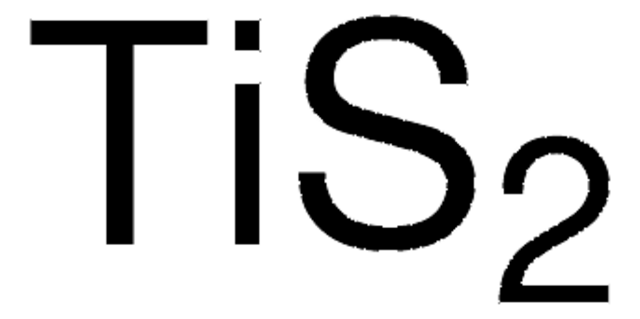366994
Titanium
powder, <45 μm avg. part. size, 99.98% trace metals basis
Sign Into View Organizational & Contract Pricing
All Photos(2)
About This Item
Empirical Formula (Hill Notation):
Ti
CAS Number:
Molecular Weight:
47.87
EC Number:
MDL number:
UNSPSC Code:
12141746
PubChem Substance ID:
NACRES:
NA.23
Recommended Products
Assay
99.98% trace metals basis
form
powder
autoignition temp.
860 °F
resistivity
42.0 μΩ-cm, 20°C
avg. part. size
<45 μm
bp
3287 °C (lit.)
mp
1660 °C (lit.)
density
4.5 g/mL at 25 °C (lit.)
SMILES string
[Ti]
InChI
1S/Ti
InChI key
RTAQQCXQSZGOHL-UHFFFAOYSA-N
Related Categories
Application
45 μm sized Titanium was used to prepare dense TiC/TiB2 composite by spark plasma synthesis and Ti-6Al-7Nb alloys.
Signal Word
Danger
Hazard Statements
Precautionary Statements
Hazard Classifications
Flam. Sol. 1
Storage Class Code
4.2 - Pyrophoric and self-heating hazardous materials
WGK
nwg
Flash Point(F)
Not applicable
Flash Point(C)
Not applicable
Personal Protective Equipment
dust mask type N95 (US), Eyeshields, Gloves
Choose from one of the most recent versions:
Already Own This Product?
Find documentation for the products that you have recently purchased in the Document Library.
Customers Also Viewed
Progress in titanium metal powder injection molding.
German RM.
Materials, 6.8, 3641-3662 (2013)
Effect of ball milling on simultaneous spark plasma synthesis and densification of TiC?TiB 2 composites.
Locci AM, et al.
Materials Science & Engineering. A, Structural Materials : Properties, Microstructure and Processing, 434.1, 23-29 (2006)
Simultaneous spark plasma synthesis and densification of TiC?TiB2 composites.
Locci AM, et al.
Journal of the American Ceramic Society. American Ceramic Society, 89.3, 848-855 (2006)
A Kurbad et al.
International journal of computerized dentistry, 16(2), 125-141 (2013-08-13)
This article presents two novel options for lithium-disilicate restorations supported by single-tooth implants. By using a Ti-Base connector, hybrid abutments and hybrid abutment crowns can be fabricated for different implant systems. The latter option in particular is an interesting new
Jinho Shin et al.
Journal of nanoscience and nanotechnology, 13(8), 5807-5810 (2013-07-26)
In this study, hydroxyapatite (HA) was coated on anodized titanium (Ti) surfaces through radio frequency magnetron sputtering in order to improve biological response of the titanium surface. All the samples were blasted with resorbable blasting media (RBM). RBM-blasted Ti surface
Our team of scientists has experience in all areas of research including Life Science, Material Science, Chemical Synthesis, Chromatography, Analytical and many others.
Contact Technical Service








